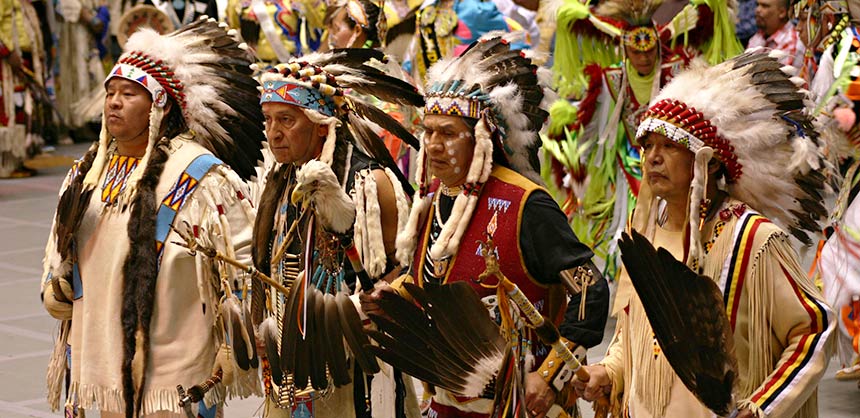The Southwest cultural region or area of the Native Americans is what are now considered Arizona, New Mexico, and parts of Colorado and Utah. This is a land of majesty and contrast with both mountains and deserts.
The Pueblo Indians also built a pit house called a kiva, which served as a ceremonial chamber or clubhouse of the men. It was located in a central place in the pueblo village. The Pueblo cultures of the Hopi and Zuni had some unique lifestyles. They grew corn, beans, squash, cotton, and tobacco. They killed rabbits with wooden throwing sticks. In the fall and winter, a mile-round circle of hunters would keep moving in until they could throw the sticks at the rabbits.

They traded cotton textiles and corn in exchange for buffalo meat from the nomadic tribes. The men wove cotton textiles and cultivated the fields. The women made fine polychrome pottery. 4,500 years ago, the people became farmers. 2,100 years ago, Hohokam, the ancestors of the Pima, learned how to dig extensive irrigation ditches for crops. Some canals were miles long.
They lived in large pit houses, dwellings with sunken floors topped by timber frameworks covered with mud. The Hopi (which means “peaceful ones”) and Zuni were guided by kachinas, spirit beings that enter men’s bodies wearing masks and performing dances. The children had kachina dolls, not as toys, but to teach the children about the roles of the kachinas.
The Hopi settled in the numerous mesas in the area. A mesa is a plateau or “tabletop” of land. They built homes of stones. Dirt paths connected the mesas years ago. Today roads help a person reach them.

The Hopi and other Pueblo people believed snakes brought rain. They held a Snake Dance. For four days, the men hunted snakes each day in a different direction. When the ceremony began, the snakes were brought to a priest in the center of all the people.